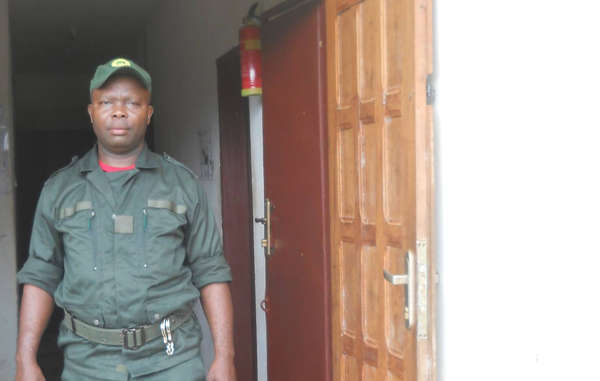
by Deep Green Resistance News Service | Jun 14, 2016 | Biodiversity & Habitat Destruction
Featured image: Cameroonian “ecoguard” Mpaé Désiré, who in 2015 was accused of beating Baka and in 2016 was arrested for involvement in the illegal wildlife trade. © Facebook
A new UN report has confirmed that corrupt officials are at the heart of wildlife crime in many parts of the world, rather than terrorist groups or tribal peoples who hunt to feed their families.
The reports’ findings have coincided with a wave of arrests of wildlife officials across Africa and Asia, raising concerns of a global “epidemic” of poaching and corruption among armed wildlife guards who are supposed to be protecting endangered species.
Recent conservation corruption arrests include:
-A wildlife guard in Cameroon, Mpaé Désiré, and a local police chief who were arrested on suspicion of involvement in the illegal ivory trade on the ancestral land of the Baka “Pygmies” and other rainforest tribes. Mr Mpaé has been accused by Baka of beating up tribespeople and torching one of their forest camps after accusing them of poaching.
The World Wildlife Fund (WWF) has been funding wildlife guards in this part of Cameroon since at least 2000, despite reports of guards arresting, beating and torturing tribal hunters.
One Baka man told Survival in 2013: “Ecoguards used to open tins of sardines and leave them as bait to attract leopards, so they could hunt them for their skins.”
Another said: “The ecoguards don’t want anyone in the forest at all so that no one hears the gunshots as they poach.”
Elsewhere:
– Four park employees in India have been arrested for involvement in poaching endangered one-horned rhinos in the notorious Kaziranga reserve, where wildlife guards are encouraged to shoot on sight anyone they suspect of poaching. 62 people have been killed there in just nine years.
– A forest officer has been arrested near Kaziranga after police found a tiger skin and ivory in his house.
– In the Pench tiger reserve in central India, a guard, named in reports as Vipin Varmiya, has been arrested for killing a tiger and her two cubs.
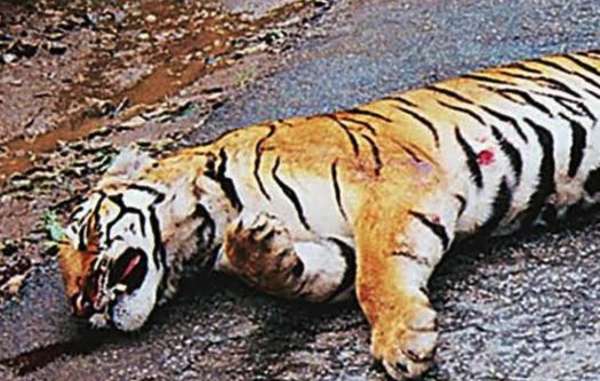
A tiger was allegedly killed by a park guard in Pench tiger reserve, India © Survival International
A recent Brookings Institution Report confirmed that the big conservation organizations are failing to tackle the true poachers – criminals conspiring with corrupt officials. The link between corruption and wildlife crime has also been reported in Tanzania, South Africa, Kenya, Zimbabwe, Uganda and Indonesia.
The involvement of armed guards in poaching, in countries where militarized conservation tactics are employed, raises questions over the advisability of using violence and intimidation to protect flora and fauna. In many parts of the world, armed conservation has led to violence against local tribal peoples, including in Cameroon, and in India where summary execution in the name of conservation is in danger of becoming more widespread.
In February 2016, Survival filed an OECD complaint against the World Wildlife Fund (WWF) for its involvement in funding repressive and often violent conservation projects in southeast Cameroon, rather than tackling the real poachers. Persecuting the environment’s best allies in place of real action to tackle these systemic problems is harming conservation.
Survival’s Director Stephen Corry said: “Conservation’s response to poaching has been to accuse local tribespeople when they hunt to feed their families, to support the use of shoot-to-kill policies and to blame terrorists. None of it works; it’s harming conservation. The true poachers are the criminals, including ecoguards, who conspire with corrupt officials. As the big conservation organizations partner with industry and tourism, they’re harming the environment’s best allies, the tribal peoples who have been dependent on and managed their environments for millennia. Tribespeople should be at the forefront of the environmental movement, they know who the poachers actually are, they can protect their land from logging, they protect biodiversity, and are better at looking after their environment than anyone else.”
Notes: Latest reports indicate Mr Mpaé has been released from custody and is awaiting trial.
“Pygmy” is an umbrella term commonly used to refer to the hunter-gatherer peoples of the Congo Basin and elsewhere in Central Africa. The word is considered pejorative and avoided by some tribespeople, but used by others as a convenient and easily recognized way of describing themselves.
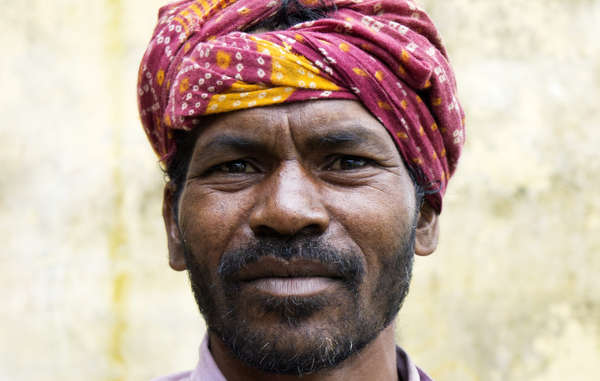
by Deep Green Resistance News Service | May 23, 2016 | Colonialism & Conquest
By Survival International
Featured image: Many Baiga have already been evicted from their forest homes, and now face lives of poverty in resettlement camps © Survival International
Several tribal villages in central India face annihilation as they are being forced to leave their ancestral land in Achanakmar tiger reserve, close to the area which inspired Rudyard Kipling’s Jungle Book.
The Baiga tribespeople have been repeatedly harassed and told that they will have to move from their villages to a muddy clearing outside the reserve, even though there is no evidence their presence in the reserve is harming tigers. Such evidence is required if the tribe’s eviction is to be lawful, but in fact the number of tigers in the reserve reportedly rose from 12 to 28 between 2011 and 2015.
One Baiga man from Rajak village said: “We don’t want to go, we can’t go. What should we do?”
A local witness told Survival: “There is nothing around the new site for them, nothing will grow in the land, there is no water and they won’t be able to take anything from the forest. That’s why they are so adamant that they won’t leave, because if they go they will just die out.”
Some have been told that if they don’t leave their ancestral land, guards will release bears and snakes into their villages. Others have been arrested and harassed – in 2009 one man was jailed for three months for eating a squirrel he had found dead on the forest floor.
Those who have already been evicted from Achanakmar now live in inadequate government camps and face lives of poverty on the fringes of mainstream Indian society.
One Baiga person from Chirahatta village, which is facing eviction, said: “They’ve been placing restrictions on us for two or three years. They don’t let us live. They take us to jail and threaten us. They are harsh and strict. They put us in jail for nothing. If we say anything they threaten to put us in jail. They are making it difficult for us to live.”
Elsewhere, Baiga people do back-breaking manual labour in bauxite mines in terrible working conditions.
Across India, tribespeople are being illegally evicted from tiger reserves, despite there being no evidence that their presence harms tigers. They face arrest and, in some places, beatings, torture and even summary execution for trying to re-enter their ancestral land, while large-scale tiger-spotting tourism is encouraged.
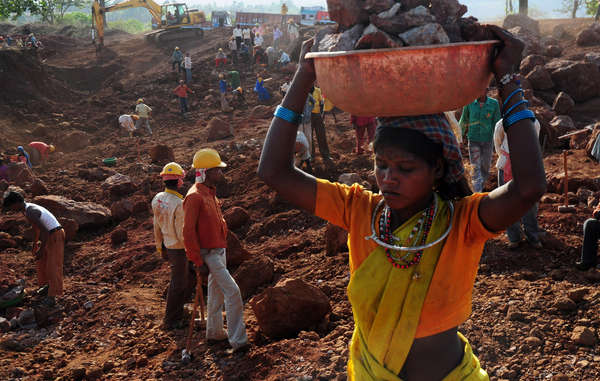
Baiga work in terrible conditions in the Bodai-Daldali bauxite mine, Chhattisgarh. Having once lived sustainable lives in the forests, they now endure exploitation and poverty after eviction from their land. © Sayantan Bera/Survival
Last year, Survival learned that tiger numbers had increased at well above the Indian national average in BRT, the one reserve in India where tribes have been formally allowed to stay on their land, demonstrating that tribal villages within wildlife reserves do not pose a substantial threat to tigers or their habitat.
Survival has written to WWF, the world’s largest conservation organization, which equips and trains the forest guards in the region.
Evidence proves that tribal peoples are better at looking after their environment than anyone else. Despite this, they are being illegally evicted from their ancestral homelands in the name of conservation. The big conservation organizations are guilty of supporting this. They never speak out against evictions.
Survival’s director Stephen Corry said: “It’s illegal and immoral to target tribes, who have coexisted with the tiger for centuries, when industrialization and mass-scale colonial-era hunting are the real reason the tiger became endangered. It’s also ineffective, because targeting tribespeople diverts action away from tackling the true poachers – criminal gangs. Big conservation organisations should be partnering with tribal peoples, not propping up the Forest Departments that are guilty of brutalizing them. Targeting tribal people harms conservation.”
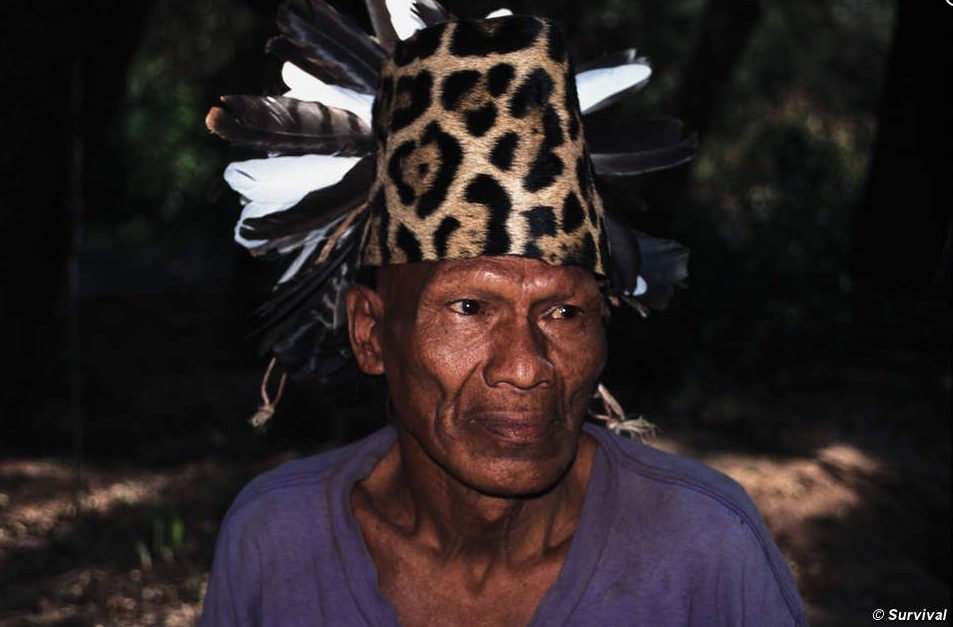
by Deep Green Resistance News Service | May 21, 2016 | Colonialism & Conquest, Indigenous Autonomy
By Survival International
Of the several different sub-groups of Ayoreo, the most isolated are the Totobiegosode (‘people from the place of the wild pigs’). Since 1969 many have been forced out of the forest, but some still avoid all contact with outsiders. Their first sustained contact with white people came in the 1940s and 1950s, when Mennonite farmers established colonies on their land. The Ayoreo resisted this invasion, and there were killings on both sides.
In 1979 and 1986 the American fundamentalist New Tribes Mission helped organise ‘manhunts’ in which large groups of Totobiegosode were forcibly brought out of the forest. Several Ayoreo died in these encounters, and others later succumbed to disease.
Recently contacted Ayoreo Indians are worried for the future of their uncontacted relatives. Other Totobiegosode groups came out of the forest in 1998 and 2004 as continual invasions of their land meant they constantly had to abandon their homes, making life very hard. An unknown number still live
a nomadic life in the forest.
The greatest current threat to the Totobiegosode is a Brazilian firm, Yaguarete Porá. It owns a 78,000 hectare plot in the heart of their territory, very near where uncontacted Ayoreo were recently sighted. Yaguarete plans to bulldoze most of it to create a cattle ranch – this will have a devastating effect on the Indians’ ability to continue living there.
Crisis point
A 2013 University of Maryland report has found the Paraguayan Chaco to have the fastest rate of deforestation in the world.
Land inhabited by the Ayoreo is some of the last standing forest in the Chaco region, a great testament to the tribe’s conservation abilities. However, pressure on the forest is immense. Almost all the Ayoreo’s ancestral land is now owned by private landowners, who hire work-teams to clear the forest of valuable timber and then introduce cattle. Many of these new landowners are Mennonites, but much of the Ayoreo land has now been bought up by wealthy Paraguayan and, especially, Brazilian cattle-ranching businesses.
The Indians are claiming title to just a fraction of their territory. Without their forest they cannot feed or support themselves, and they are also greatly concerned about their uncontacted relatives still living there. Under Paraguayan law, this claim area should have been titled to the Indians years ago, as both Paraguayan law, and the country’s Constitution, recognize the Indians’ right to the ownership of their traditional lands.
But the powerful landowners have blocked the law at every turn, and have illegally bulldozed some of the forest already.
Crisis Point: As bulldozers and cattle ranchers encroach further into their territory the Ayoreo of Paraguay are worried for the safety of their uncontacted relatives. In the heart of the Indians’ territory ranching firm Yaguarete Porá has already cleared a large area of forest that is home to uncontacted Ayoreo.
In response to public anger it has announced plans to create a “nature reserve” on its land, but actually intends to destroy around two thirds of the forest. In 2010, Survival awarded the company with its Greenwashing Award.
With the bulldozing of this vast area of forest, the isolated Totobiegosode will have nowhere left to hide. The settled Totobiegosode are desperate to protect it.
Beast with Metal Skin: In 1994 a bulldozer driver clearing the forest at night was attacked out of the darkness. Although he didn’t know it, he was destroying the gardens and hunting grounds of a group of Ayoreo-Totobiegosode families. One of the Indians, Esoi, was finally forced out of the forest in 2004. Here, he recounts his attack on the bulldozer.
How do they live?
The Totobiegosode live in small communities. They grow squashes, beans and melons in the sandy soil, and hunt in the forest. Large tortoises and wild pig are particularly prized, as is the abundant wild honey.
In the forest four or five families will live together in a communal house. A central wooden pillar supports a dome-shaped structure of smaller branches, topped with dried mud.
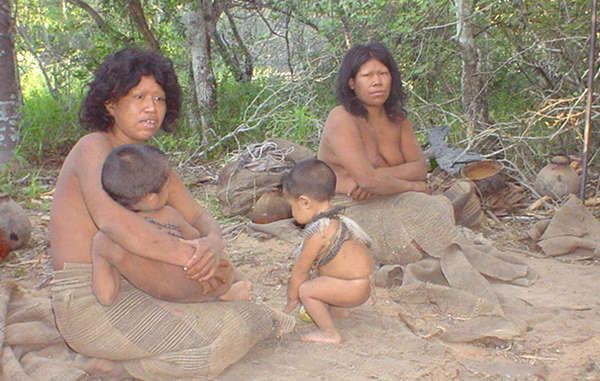
Members of the Paraguayan Ayoreo-Totobiegosode group on the day they were contacted for the first time, in 2004. © GAT/Survival
Each family will have its own hearth around the outside; people will only sleep inside if it rains. The most important Ayoreo ritual was named after asojna, the nightjar: when the bird’s call was first heard it heralded the arrival of the rainy season, and a month of celebrations and festivities.
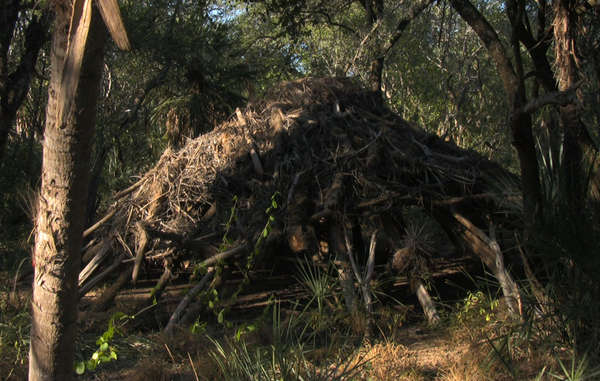
An abandoned house in the Paraguayan Chaco belonging to uncontacted Ayoreo-Totobiegosode Indians © Survival
The Ayoreo who now live in settled communities live in individual family huts. Those who have lost their land now have little choice but to work as exploited labourers on the cattle ranches that have taken over much of their territory. The evangelical New Tribes Mission has a base near their communities, and exerts a powerful influence on their daily lives. Under the missionaries, the asojna ritual—and many others—have been suppressed.
Act now to help the Ayoreo
- Write a letter or email to Grupo San Jose asking it to hand back the Ayoreo’s land to its rightful owners.
- Write a letter or email to the government of Paraguay asking it to demarcate the Ayoreo’s land in line with the country’s laws and treaties.
- Donate to the Ayoreo campaign (and other Survival campaigns).
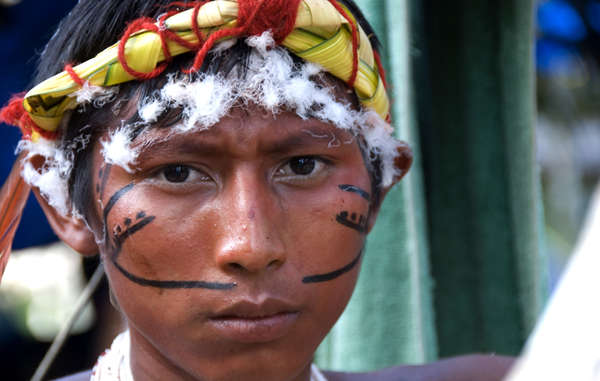
by Deep Green Resistance News Service | Mar 31, 2016 | Lobbying, Toxification
Featured Image: Gold miners have been invading Yanomami land for decades. © Fiona Watson/Survival International
Mercury poisoning is devastating tribal peoples across Amazonia, Survival International warned the U.N today.
In a letter to the U.N Special Rapporteur for Health, Survival International highlighted the failure of South American governments to address the contamination.
The unmonitored use of mercury, such as in illegal alluvial gold mining, often takes place on tribal peoples’ lands. Discriminatory attitudes towards tribal peoples mean that little action is taken to control it.
In Peru, 80% of a Nahua community have tested positive for high levels of mercury poisoning. 63% of those affected are children. Symptoms include anemia and renal failure, and one child has already died displaying symptoms consistent with mercury poisoning.
The Peruvian government has known about the mercury contamination since 2014 but has done little to identify the source. It is possible that other tribal peoples in the area have been affected, including uncontacted peoples.
In Brazil, new statistics reveal alarming rates of mercury poisoning amongst the Yanomami and Yekuana. 90% of Indians in one community are severely affected.
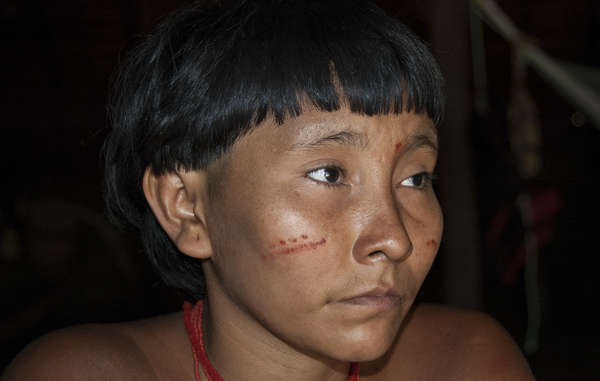
Without medical attention, mercury posioning can be lethal. Children and women of child-bearing age are most vulnerable
© Fiona Watson/Survival
Illegal gold miners operate on Yanomami land, polluting the rivers and forest with mercury. Uncontacted Yanomami are particularly in danger as many miners work near where they live.
Indigenous spokesman Reinaldo Rocha Yekuana said: “We are worried about the results of this research. This pollution affects plants, animals, and future generations.”
The Brazilian authorities have known about the mercury contamination since at least the 1980s, yet have failed to put a permanent stop to the illegal gold mining. Little has also been done to treat the affected Indians.
In Venezuela, several tribes including the Yekuana, Yanomami, Piaroa, Hoti and Pemon are also being devastated. 92% of Yekuana women in one region have levels of contamination far exceeding accepted limits.
Survival’s Director, Stephen Corry said: “These governments are sitting on a ticking time bomb. Every week that they fail to act, more and more indigenous peoples are being harmed. When mercury poisoning is identified, the source must be halted immediately and those affected must be treated. The effects will be catastrophic if indigenous peoples’ lands aren’t protected.”
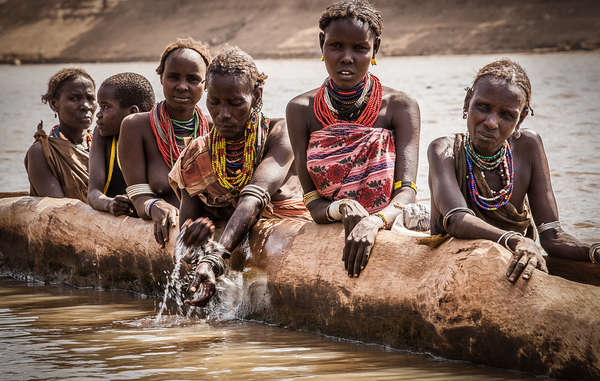
by Deep Green Resistance News Service | Mar 14, 2016 | Biodiversity & Habitat Destruction, Lobbying
Survival International has reported Italian engineering giant Salini to the OECD (Organization for Economic Cooperation and Development) over its construction of a controversial dam which is set to destroy the livelihoods of hundreds of thousands of people in Ethiopia and Kenya.
The dam has cut off the Omo river’s regular flooding, which 100,000 people rely on to water their crops and livestock and a further 100,000 depend on indirectly. According to experts, this could also spell the end for Lake Turkana – the world’s largest desert lake – and disaster for the 300,000 tribespeople living along its shores.
Salini did not seek the consent of local people before building the dam, but claimed that an “artificial flood release” would compensate them for their losses. However, this promised flood never came and thousands of people now face starvation.
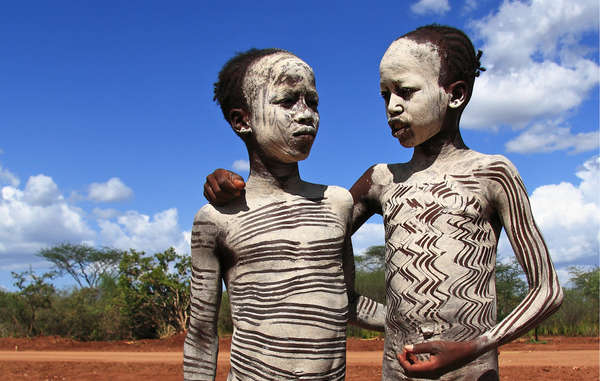
Up to half a million people face starvation as a result of the dam Salini has constructed on the Omo river.
© Magda Rakita/Survival International
The region is one of the most important sites in early human evolution, and an area of exceptional biodiversity, with two World Heritage Sites and five national parks. The head of Kenya’s conservation agency said last week that the dam is unleashing “one of the worst environmental disasters you can imagine.”
Survival’s Director Stephen Corry said: “Salini has ignored crucial evidence, made false promises and ridden roughshod over the rights of hundreds of thousands of people. Thousands are now facing starvation because Italy’s largest contractor, and one of its best known companies, didn’t think human rights were worth its time. The real consequences of the Ethiopian government’s devastating policies for its country’s development, which are shamefully supported by western aid agencies like the UK’s DFID and USAID, are plain for all to see. Stealing people’s land and causing massive environmental destruction is not progress, it is a death sentence for tribal peoples.”











